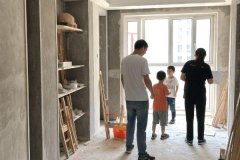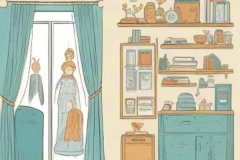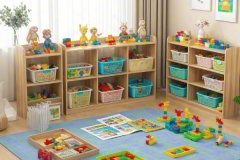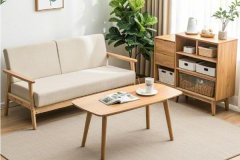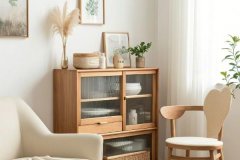Best ideas for organizing your child’s bedroom
Organizing your child’s bedroom can be a fun and rewarding project that not only creates a tidy space but also fosters independence and creativity. Here are some unique and practical ideas to help you transform your child’s bedroom into an organized and functional haven:
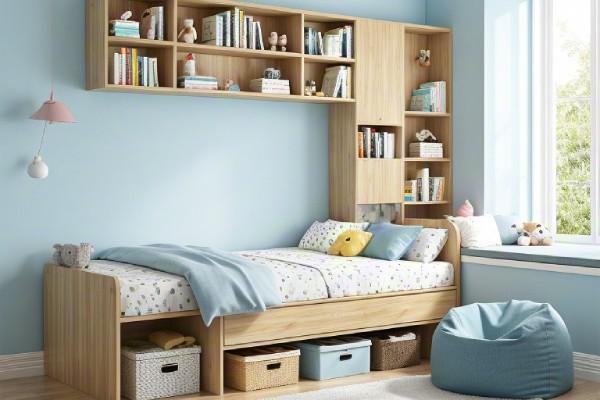
1. Create a "Landing Zone" Near the Door
-
Designate a small area near the entrance for backpacks, shoes, and outerwear. Use hooks, cubbies, or a bench with storage underneath to keep these items off the floor and easily accessible.
-
Add a small basket or tray for keys, permission slips, or other essentials to help your child stay organized for school.
2. Use Color-Coded Storage
-
Assign specific colors to different categories of items (e.g., blue for toys, green for art supplies, red for books). This makes it easier for your child to identify where things belong and encourages them to clean up independently.
-
Label bins or drawers with pictures or words for younger children who are still learning to read.
3. Incorporate a "Toy Library" System
-
Rotate toys by storing some in a closet or under the bed and only keeping a few out at a time. This reduces clutter and keeps your child interested in their toys.
-
Use clear bins or labeled boxes to make it easy to swap toys in and out.
4. Install Adjustable Shelving
-
Adjustable shelves allow you to customize storage as your child grows. Use them to display books, store bins, or showcase special items like trophies or artwork.
-
Keep frequently used items on lower shelves for easy access, and reserve higher shelves for less-used items.
5. Create a Homework Station
-
Dedicate a small desk or corner for homework and creative projects. Equip it with supplies like pencils, paper, and a small organizer for markers or crayons.
-
Add a bulletin board or magnetic board for reminders, schedules, or inspirational quotes.
6. Maximize Vertical Space
-
Use wall-mounted organizers, pegboards, or hanging baskets to free up floor space. These are perfect for storing small items like stuffed animals, art supplies, or hair accessories.
-
Consider a loft bed with a desk or play area underneath to make the most of the room’s vertical space.
7. Designate a "Reading Nook"
-
Create a cozy corner with a small bookshelf, bean bag chair, or floor cushions. This encourages your child to read and provides a quiet retreat.
-
Use a basket or wall pockets to store books and keep them within reach.
8. Implement a "One In, One Out" Rule
-
To prevent clutter, encourage your child to donate or discard one old item for every new item they receive. This teaches responsibility and helps maintain a manageable amount of belongings.
9. Use Under-Bed Storage
-
Utilize the space under the bed for storing out-of-season clothes, extra bedding, or toys. Choose rolling bins or drawers for easy access.
-
For younger children, consider a bed with built-in drawers for added convenience.
10. Create a "Memory Box"
-
Dedicate a box or bin for sentimental items like artwork, school projects, or special notes. This helps reduce clutter while preserving cherished memories.
-
Review the contents together at the end of each school year to decide what to keep and what to let go of.
11. Incorporate Fun and Functional Furniture
-
Choose furniture that doubles as storage, such as ottomans with hidden compartments, beds with built-in drawers, or benches with storage seats.
-
Opt for modular furniture that can be rearranged as your child’s needs change.
12. Label Everything
-
Use labels with pictures or words to help your child know where everything belongs. This is especially helpful for younger children who are still learning organizational skills.
-
Consider using chalkboard labels so you can easily update them as your child’s interests evolve.
13. Encourage Daily Cleanup with a "5-Minute Tidy" Routine
-
Set a timer for 5 minutes each evening and make cleanup a fun, family activity. Play music or turn it into a game to motivate your child.
-
Use a checklist or visual chart to guide them through the process.
14. Personalize the Space
-
Involve your child in the organizing process by letting them choose storage bins, colors, or themes. When they feel ownership of the space, they’re more likely to keep it tidy.
-
Display their favorite artwork or creations to make the room feel special and personalized.
15. Teach Organizational Skills
-
Use the bedroom as a teaching tool to help your child develop lifelong organizational habits. Show them how to sort items, fold clothes, and put things back in their designated spots.
-
Praise their efforts and celebrate small victories to keep them motivated.
By implementing these ideas, you can create a bedroom that is not only organized but also a reflection of your child’s personality and interests. A well-organized space can help reduce stress, improve focus, and make daily routines smoother for both you and your child.
Organizing a child’s bedroom is both a practical and creative challenge, and it can be an opportunity to teach your child the value of order and responsibility. Here are some unique and effective ideas for organizing your child's bedroom:
1. Zoning the Room
Break the room into functional zones: sleeping, play, study, and storage. This allows your child to easily understand where everything goes and also encourages them to keep things tidy by assigning each activity to a specific area.
- Sleeping Zone: Bed with minimal distractions around it.
- Play Zone: A designated space for toys, puzzles, and interactive activities.
- Study Zone: If old enough, set up a study desk with essential supplies.
- Storage Zone: Clear, labeled bins or shelves for easy access.
2. Use Multi-Functional Furniture
Maximize the use of space with furniture that has built-in storage options. For example:
- Lofted Beds: These elevate the bed, creating space for a play or study area underneath.
- Storage Ottomans: These can be used for seating and also provide hidden storage for toys or books.
- Bookshelf Bed: A bed frame with built-in shelves can help organize books, stuffed animals, or other small items.
3. Color-Coded Storage Bins
Invest in colorful, stackable bins or baskets and assign each a color based on what it contains—red for cars, blue for Legos, yellow for dolls, etc. This not only helps with organization but also adds a fun element to the room.
4. Under-Bed Storage
Take advantage of the space under the bed. Use rolling bins, baskets, or even fabric drawers to store items that don’t need to be accessed daily. This is perfect for seasonal clothing, extra bedding, or toys that aren’t used as often.
5. Pegboard for Display & Organization
Mount a pegboard on the wall to hang smaller items like accessories, hats, bags, or even school supplies. Pegboards are highly customizable and can be rearranged as your child’s needs change.
6. Floating Shelves
Floating shelves are great for displaying books, small toys, and even personal artwork. They keep items off the floor, maintaining a cleaner and more spacious look while also adding a decorative touch to the room.
7. Toy Rotation System
Keep the number of toys in circulation to a minimum by rotating them every few weeks. Store the extra toys in labeled bins or closet space and switch them out to keep things fresh and reduce clutter. This will also help your child appreciate and engage with their toys more fully.
8. Wall-Mounted Storage Solutions
Install wall-mounted hooks, baskets, or shelves to store items like backpacks, coats, or accessories. Wall-mounted storage helps save valuable floor space and keeps things organized in plain sight.
9. Drawer Dividers
Use dividers within dresser drawers to separate clothing by category (e.g., shirts, pants, socks). This makes it easier for your child to find and put away clothes, encouraging them to help with tidying up.
10. Personalized Labeling
Encourage your child to take ownership of their space by letting them help with labeling storage containers. You can use pictures for younger children who can’t read yet, and simple labels for older kids. This helps them learn where things belong and fosters independence.
11. Themed Organizing Bins
Turn organizing into fun, themed activities. For example, use themed bins (dinosaurs, fairies, space, etc.) to house specific toys. This helps create a connection between the child and the organization system while adding to the overall room decor.
12. Clothing Rods for Easy Access
For kids who are old enough, installing a lower clothing rod can help them easily hang and retrieve their own clothes. It empowers them to pick out their own outfits and encourages more participation in keeping their space tidy.
13. Interactive Storage Solutions
For younger children, use interactive elements like clear plastic drawers with pull-out handles or storage bins with lids that are easy for little hands to open and close. You can also use a toy chest with a fun, interactive lid that doubles as seating.
14. Nightstand with Built-In Storage
A nightstand with built-in storage or drawers can keep bedside essentials like books, a nightlight, and toys organized. Some nightstands also have compartments for electronics or small items that don’t need to be out in the open.
15. Create a Clothes Station
If your child is old enough to dress themselves, setting up a "clothes station" can encourage them to organize their outfits. Use hooks for hats and jackets, a drawer or basket for shoes, and a set of shelves or bins for accessories like scarves or gloves.
16. Personalized Art & Shelving
Combine art and storage by turning walls into an art gallery for your child’s favorite creations. It’s a way to display their work while maintaining an organized, clutter-free space.
By incorporating some of these ideas, you can create a functional and inviting space that fosters both creativity and responsibility in your child.
